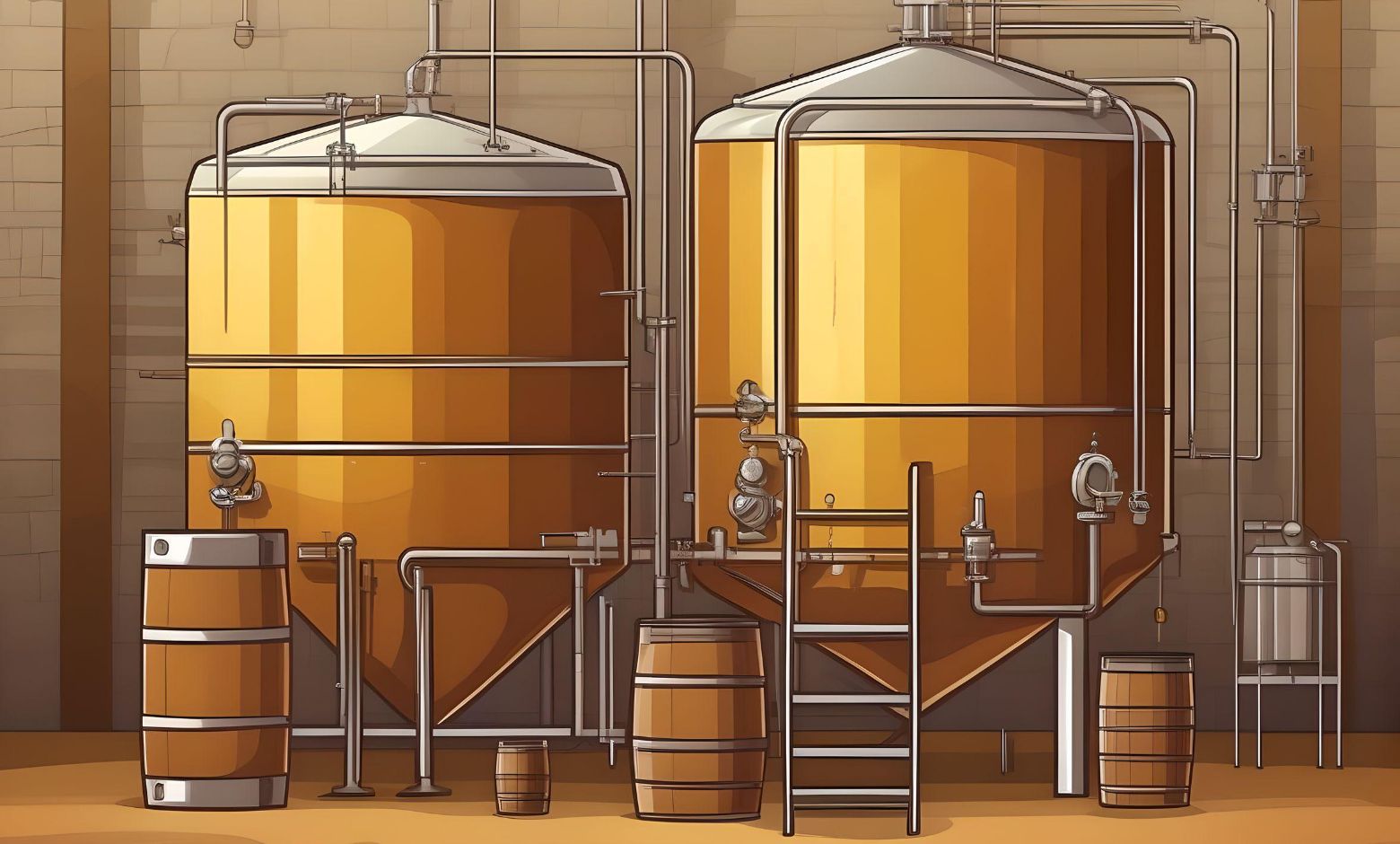Introduction
Everyone knows what beer is, right? It is the most ancient alcoholic beverage enjoyed by many around the world. But this definition seems lacking.
Have you ever wondered what exactly beer is made of? What are the key ingredients that give beer its unique flavor and characteristics? In this article, we will explore the various elements of beer and delve into the brewing process.
The Role of Water
The importance of water in brewing beer
Of course, however, you look at it, both by mass and by volume, beer consists primarily of water. Since we also mainly consist of water, we are basically beer. Still, however trivial, water has an essential and often overlooked role in brewing.
- Water is a crucial ingredient in beer production.
- It affects the final product’s taste, quality, mineral content, and consistency.
- Different regions have distinct water profiles that contribute to beer styles.
The Essential Ingredient: Malted Barley
Malted barley and its significance in brewing
- Malted barley forms the backbone of beer.
- It provides fermentable sugars and contributes to beer’s color and flavor.
- Various malted barley types create a wide range of beer styles.
The color of beer comes from the malt used. The usual color is a light amber, made with pale malts. Beers like pale lager and pale ale are named for using malt dried with coke as fuel. Coke started being used for roasting malt in 1642, but the term “pale ale” wasn’t used until around 1703.
Most of the commercial beer sold today is derived from the pale lager created in 1842 in Pilsen, which is now in the Czech Republic.
Hops: Adding Aromatic Bitterness
Hops and their role in beer
Hops are what give beer its characteristic bitter taste. To get more technical, the chemicals responsible for the bitterness are called alfa acids. Alfa acid is produced by the resin glands of a hop plant’s flower. Hops also act as natural preservatives and have some antibiotic properties.
By the way, we have recently reported that climate change has an unfortunate effect on the alfa acid content in hops.
- Hops are flowers used to impart bitterness, aroma, and stability to beer.
- Hops balance the sweetness of the malted barley.
- Different hop varieties offer unique flavors and aromas.
An interesting fact: unlike all other ingredients, hops are almost exclusively used to produce beer and don’t have any other significant use in the food industry. This is one of the reasons we have chosen a hop cone as a logo for our website.
Yeast: The Magical Microorganism
Yeast and its importance in fermentation
- Yeast is responsible for converting sugars into alcohol and carbon dioxide.
- Different yeast strains produce distinct flavors and aromas.
- The type of yeast used determines the beer style.
Depending on what type of yeast and fermentation process is used during brewing, most beers are usually divided into top-fermented and bottom-fermented beers. However, some beer styles (most famously the Belgian lambics) don’t use either type, relying instead on exposure to wild yeasts and bacteria native to the Zenne Valley in Belgium.
Other Adjunct Ingredients
Medieval Germans, who knew a thing or two about beer, considered that only water, barley, and hops should be used to produce beer. They even had a law called Reinheitsgebot (literally “purity order”) that prevented brewers from adding other components to their brews. Apparently, at the time, they did not know about yeast or didn’t consider it to be a “real” ingredient.
However, today, many specialty beers benefit from additional ingredients such as fruits, herbs, and spices. Most modern craft breweries rarely limit themselves to only basic ingredients of beer. For example, mango puree or mango juice is used to make increasingly popular mango pale ale.
The widening range of ingredients enriches the beer culture. It makes a visit to a local craft beer shop much more exciting. Still, the classic German-style “pure” beer is always available to more conservative beer enjoyers.
Additional beer ingredients and their impact
- Different malted grains, such as wheat, corn, and rice, can be used in beer production.
- Fruits, spices, and herbs can be added to create specialty beers.
- These adjunct ingredients add complexity and creativity to beer recipes.
Some brewers use clarifying agents or finings to make the beer look clear and clean instead of cloudy. These substances and protein solids settle to the bottom of the container and then are removed from the final product. This gives the beer a clear appearance, different from the cloudy look of certain traditional and older beer styles like wheat beers.
By the way, the term “lambic” might come from “alembic,” a kind of still used to make regional spirits like cognac and jenever. However, it is not used in making lambic.
Conclusion
Beer is made from various ingredients that create a unique taste and character. Water, malted barley, hops, and yeast are the key components, while other adjunct ingredients provide additional flavors and aromas.
The combination of these ingredients and the brewing process results in the diverse range of beer styles available today. So, the next time you enjoy a cold beer, take a moment to appreciate the craftsmanship and the beer ingredients that make it all possible. Cheers!
Note: The information above is a general overview of beer ingredients and is not an exhaustive list. Refer to specific types of beer and beer ingredient lists for more detailed information.
